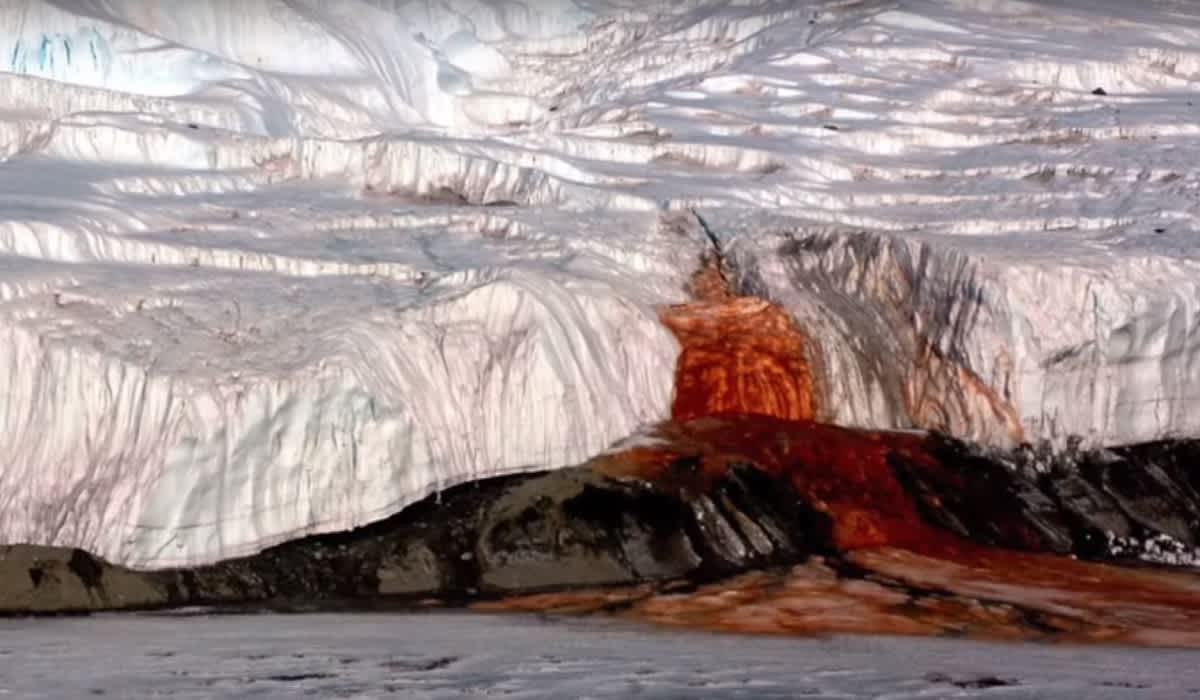Updated: Source of Antarctica’s ‘Blood Falls’ Found
OutdoorHub Reporters 05.08.17

The following is from a previous OutdoorHub article that has been updated due to recent findings:
In 2015, a team of scientists speculated about a system of underground waterways full of briny water flowing through the ice.
After a recent follow up study, the team has successfully mapped the inside of the mysterious glacier – known as “Taylor Glacier” – showing the path the water takes to Blood Falls and numerous other unusual features beneath the ice.
“We knew that there was a brine outflow creating the falls, and that 2015 paper pretty much verified that the salty water came from beneath the glacier,” Jessica Badgeley lead author of the study said.
Researchers used radio-echo sounding to bounce sound waves into the glacier, which gave them a pretty clear picture of all the streams and reservoirs buried in the glacier.
What surprised the team the most, was that liquid water can exist inside and beneath a frozen glacier at all, let alone for millions of years. University of Alaska, Fairbanks, glaciologist Erin Pettit explained in a press release: “While it sounds counterintuitive, water releases heat as it freezes, and that heat warms the surrounding colder ice.”
So, while the liquid is in the process of freezing underneath the glacier, enough of the brine freezes to release just enough heat to keep the remainder of the brine liquid. Pettit also points out that the salt in the water assists in keeping the water liquid by lowering its freezing point – isn’t science amazing?
“Taylor Glacier is now the coldest-known glacier to have persistently flowing water, Erin said.”
Since 1911, explorers and visitors to the Taylor Glacier have wondered about the blood-red liquid that flowed from what has been dubbed “Blood Falls” in Victoria Land, Antarctica. Scientists originally attributed the phenomenon to red algae, but a new study has found that the liquid’s blood-like appearance is actually due to bacteria living within the brine flowing across the valley.
“This study shows Blood Falls isn’t just a weird little seep,” the study’s lead author, microbiologist Jill Mikucki, told Live Science. “It may be representative of a much larger hydrologic network.”
So what exactly is the liquid? According to the study, the area is crisscrossed by a network of underground rivers that connect scattered lakes across Taylor Valley. Estimated to be twice as salty as seawater, this briny water remains in liquid form despite being in temperatures well below freezing. It is believed that this network of channels is actually the remnant of an ancient sea that still contains microbial life. In fact, water samples from Blood Falls contained at least 17 different types of microbes, yet almost no oxygen. This may indicate that the microbes have developed a new strategy to tap into ferric irons inside the brine and metabolize organic matter within – essentially eating through the ferric irons and staining the glacier red.
The researchers have since managed to recover samples of bacteria from inside the bleeding glacier, which they say could be vital to studying life on other worlds. The dark, frozen, and airless environment is comparable to that of Mars, which once had liquid water but has since frozen. The presence of bacteria living in such extreme environments has researchers optimistic that living microbes could still be present on other planets.
“Briny groundwater has been suggested as supporting a deep biosphere on Mars,” the researchers wrote in the study, adding that the study could prove useful for the future exploration of the red planet.
You can see a video of the probe in action below:

